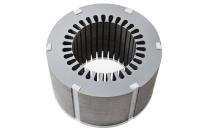
The core is a central component of a transformer, responsible for transmitting magnetic flux and reducing energy loss. Traditional transformer cores are mostly made of silicon steel sheets, which offer good magnetic properties and mechanical strength. However, the relatively high density of silicon steel limits the potential for further lightweight designs. With advancements in technology, new core materials have emerged, providing more options for lightweight transformer designs.
In recent years, new materials such as nanocrystalline alloys and amorphous alloys have been increasingly used in transformer core designs. These materials offer higher magnetic permeability and lower core loss, enabling transformers to operate more efficiently. Moreover, their relatively low density helps reduce the overall weight of transformers while maintaining performance stability. These advantages make new core materials a key choice for lightweight designs.

Lightweight design requires a comprehensive approach, considering material performance, structural design, and manufacturing processes. First, high-performance core materials can be used to reduce the volume and weight of the core. Second, in terms of structural design, optimizing the shape of the core, such as reducing the winding window area or adjusting the stacking method, can further contribute to weight reduction. Additionally, advanced manufacturing techniques such as laser cutting and high-precision stamping can minimize processing errors, improve material utilization, and further support the goal of lightweight design.
Small-scale power transformers and specialty transformers (such as those used in aviation or electric vehicles) have already adopted lightweight design solutions. For instance, transformers using nanocrystalline materials are 20%-30% lighter than traditional silicon steel core transformers, with losses reduced by up to 50%. These practical applications not only demonstrate the feasibility of lightweight design but also provide valuable insights for other types of transformer designs.
The development of core materials and lightweight transformer design will continue to advance towards high performance and intelligence. With ongoing advancements in material technology and simulation tools, future transformer designs will focus more on multi-functional and sustainable materials. Furthermore, integrating artificial intelligence and big data technology can optimize design processes and enhance performance prediction capabilities. Lightweight designs not only meet market demands for efficient, low-energy power equipment but also promote the green and sustainable development of the power industry.
Brief classification of silicon steel
2022-09-09Storage and Maintenance of Stainless Steel
2021-08-13Influence of silicon steel material on transformer performance
2024-11-22New opportunities and challenges in stainless steel industry
2024-04-19Where is the application field of 316L stainless steel pipe drawing technology?
2021-03-10What are the common uses of stainless steel coils?
2021-02-10






